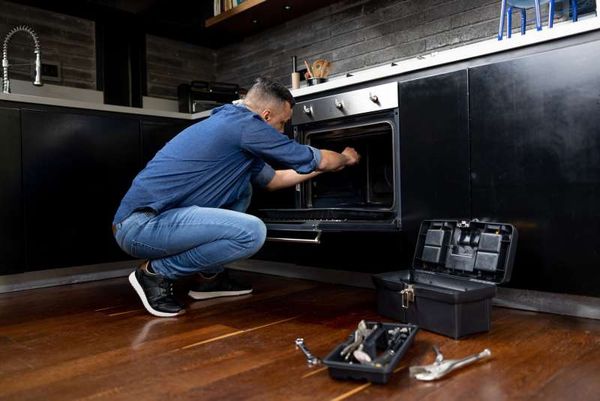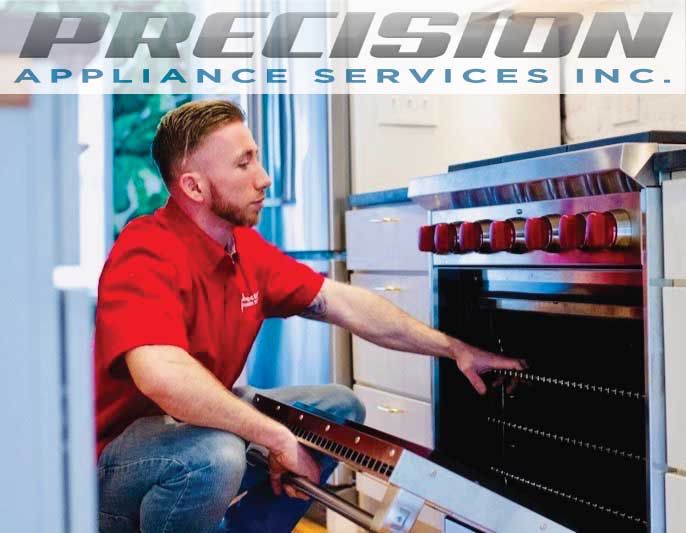The Ultimate Guide to Understanding Appliance Repair in the house
When your refrigerator quits cooling or your oven rejects to heat, it can feel frustrating. Comprehending appliance repair work in the house can save you time and money. You'll discover to identify signs, use important devices, and comply with a methodical troubleshooting process. Prior to you start, there are vital safety and security precautions you require to take right into account. What are the most usual troubles, and just how can you repair them? Let's discover the fundamentals.
Usual Device Issues and Their Signs
When your devices begin breaking down, it's essential to acknowledge the signs early on. Disregarding them can lead to bigger concerns and expensive fixings. For example, if your fridge isn't cooling appropriately, you might notice cozy spots or condensation developing. This might indicate a stopping working compressor or a blocked vent.Your dishwasher might reveal problems via dirty meals or unusual noises throughout cycles. If you listen to grinding or clanking, it's time to investigate.A washing maker that will not spin or drain can leave you with soaked laundry, recommending a stopped up drain or a malfunctioning pump.Lastly, if your stove's temperature appears off or it takes for life to pre-heat, you may be managing a malfunctioning thermostat. By remaining sharp to these signs and symptoms, you can address concerns before they rise right into major repair work.
Crucial Devices for Device Repair
When you're dealing with home appliance repairs in your home, having the right devices is important. Standard hand tools like screwdrivers and pliers will certainly assist you take apart and repair different home appliances, while electrical screening tools ensure you're functioning securely with circuitry. Let's look at what you need to begin on your repair work trip.
Fundamental Hand Tools
Having the right devices is important for effective appliance repair at home. Begin with a reliable screwdriver collection, including both flathead and Phillips kinds, as screws are usual in appliance setting up. Pliers are also important; they aid with gripping, twisting, and reducing cables or small parts. A pair of needle-nose pliers can get to difficult situations conveniently. You'll require a good flexible wrench for tightening or loosening up nuts and bolts. An utility knife comes in handy for puncturing product packaging or insulation. Do not neglect a durable workbench or surface to securely organize your tools and parts. With these standard hand tools, you'll be well-prepared to take on most appliance repairs that come your method.
Electrical Testing Tools
Alongside fundamental hand tools, electric testing tools play an essential function in appliance repair service. These devices help you detect electric issues and assurance devices function safely. A multimeter is essential; it determines voltage, existing, and resistance, allowing you to identify troubles swiftly. A non-contact voltage tester is another essential, letting you detect online cables without making direct call, enhancing your safety. Secure meters are wonderful for determining present flow in wires without detaching them, conserving you time and effort. In addition, circuit testers can rapidly inspect if electrical outlets are operating appropriately. By using these devices, you'll enhance your troubleshooting process and boost your fixing abilities, making home appliance maintenance a great deal easier.
Step-by-Step Overview to Diagnosing Device Issues
When your device breaks down, it can be aggravating, yet diagnosing the problem does not have to be frustrating. You'll learn to determine usual troubles and apply effective repairing strategies. Let's go through the actions to get your appliance back in functioning order.
Common Home Appliance Problems

Fixing Methods Explained

Fixing Major Kitchen Appliances: A Closer Look
Have you ever website before wondered just how to deal with common issues with your kitchen appliances? Fixing significant cooking area home appliances like refrigerators, stoves, and dishwashers can be simpler than you believe. Begin by determining the issue-- whether it's a fridge not cooling or an oven that will not warm. Frequently, a simple reset or checking the source of power can fix the issue.For fridges, clean the condenser coils and examine the door seals. If your oven's not home heating, check the home heating component and thermostat. Dishwashing machines might simply require a clean filter or a reset to get them back at work. Constantly unplug the device prior to diving right into repair services to ensure your safety.Don' t neglect to speak with the individual handbook for details fixing tips associated with your version. With a little bit of perseverance and the right tools, you can confidently tackle device repair work and save cash at the same time!

Troubleshooting Laundry Appliances: Tips and Techniques
When your laundry devices start acting up, it can feel frustrating, yet fixing them does not need to be a trouble. Begin by checking the power supply. Validate the device is plugged in and the electrical outlet is functioning. Next off, examine the door or lid button; a defective switch can protect against the machine from operating.For washing machines, if it's not spinning, check for unbalanced loads. Rearranging the clothes may fix the problem. If your dryer isn't heating, tidy the dust filter and examine the air vent for blockages.Listen for uncommon sounds; they can show an issue. If your appliance is leaking, check the pipes for cracks or loose links. Document any kind of error codes displayed on electronic displays, as they can assist you in identifying the problem. Finally, speak with the customer handbook for details fixing tips associated with your version.
Safety And Security Precautions to Take Throughout Fixes
Before you start any device fixings, it's vital to focus on security to avoid accidents or injuries. Initially, disconnect the home appliance or turn off the breaker to assure no power reaches it while you work. Use protected tools to reduce the risk of electrical shock. Use safety goggles and handwear covers to shield on your own from sharp sides or debris (Dryer repair Oro Valley Dependable Refrigeration & Appliance Repair Service).Make particular your workspace is tidy and well-lit, so you can see what you're doing. Maintain kids and pets far from the location to avoid distractions and prospective threats. If you're handling gas home appliances, be extra careful; look for leakages prior to proceeding.Take your time, and do not rush via repairs. If you feel unsure concerning any kind of step, it's much better to pause and research than to presume. Following these preventative measures will certainly assist create a safer atmosphere for your DIY home appliance repair service job
When to Call an Expert for Assistance
Just how do you understand if it's time to call in a professional for device repairs? If you've tried standard troubleshooting without success, it's a clear sign. For instance, if your appliance still won't start or reveals uncommon noises after resetting it, do not hesitate to look for expert help.When you notice leaks, smoke, or shedding smells, prioritize safety and security and call a pro right away. These issues can result in more considerable damages or pose risks to your home.Also, if your device is under guarantee, getting in touch with an expert is typically the very best route. They can guarantee that repairs won't nullify your service warranty, conserving you cash in the lengthy run.Finally, if you're unsure or uncomfortable with intricate fixings, it's sensible to leave it to the specialists. Remember, tackling challenging problems without the right experience can bring about pricey mistakes. Depend on a professional when in uncertainty!
Often Asked Inquiries
Just How Can I Stop Device Problems in the Future?
To avoid device problems in the future, you ought to execute regular upkeep, look for wear and tear, clean filters, and stay clear of overloading. Remaining aggressive will help expand their life expectancy and keep them running efficiently.
What Are one of the most Typical DIY Home Appliance Fixing Mistakes?
You may forget safety precautions, avoid troubleshooting actions, or use wrong tools when trying DIY home appliance repair work. Rushing the procedure or disregarding manufacturer standards can lead to even more considerable problems and pricey blunders. Remain individual and educated!
How Do I Know if a Component Requirements Replacement?
You can inform if a part requires replacement by checking for unusual noises, leakages, or irregular efficiency. If the device struggles to operate correctly or reveals noticeable damage, it's likely time for a substitute.
Can I Utilize Generic Components for Home Appliance Repair Works?
Yes, you can use generic parts for appliance repairs, yet establish they're suitable - Dependable Refrigeration & Appliance Repair Service Washing Machine Repair. Common parts may save you money, but they can influence performance or durability, so weigh your alternatives thoroughly prior to deciding
What Service Warranties Cover Device Fixes?
The majority of home appliance service warranties cover repair work for making defects, yet they often leave out damages from misuse. Inspect your warranty terms meticulously, as some may call for using licensed specialists and initial components for protection to remain valid.
Comments on “Fix It Before You Call a Pro – Dependable Refrigeration & Appliance Repair Service Dryer repair near me”